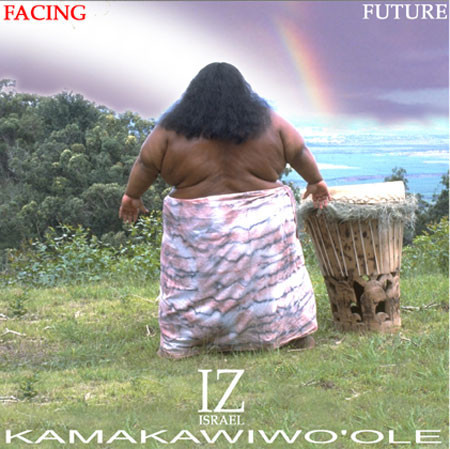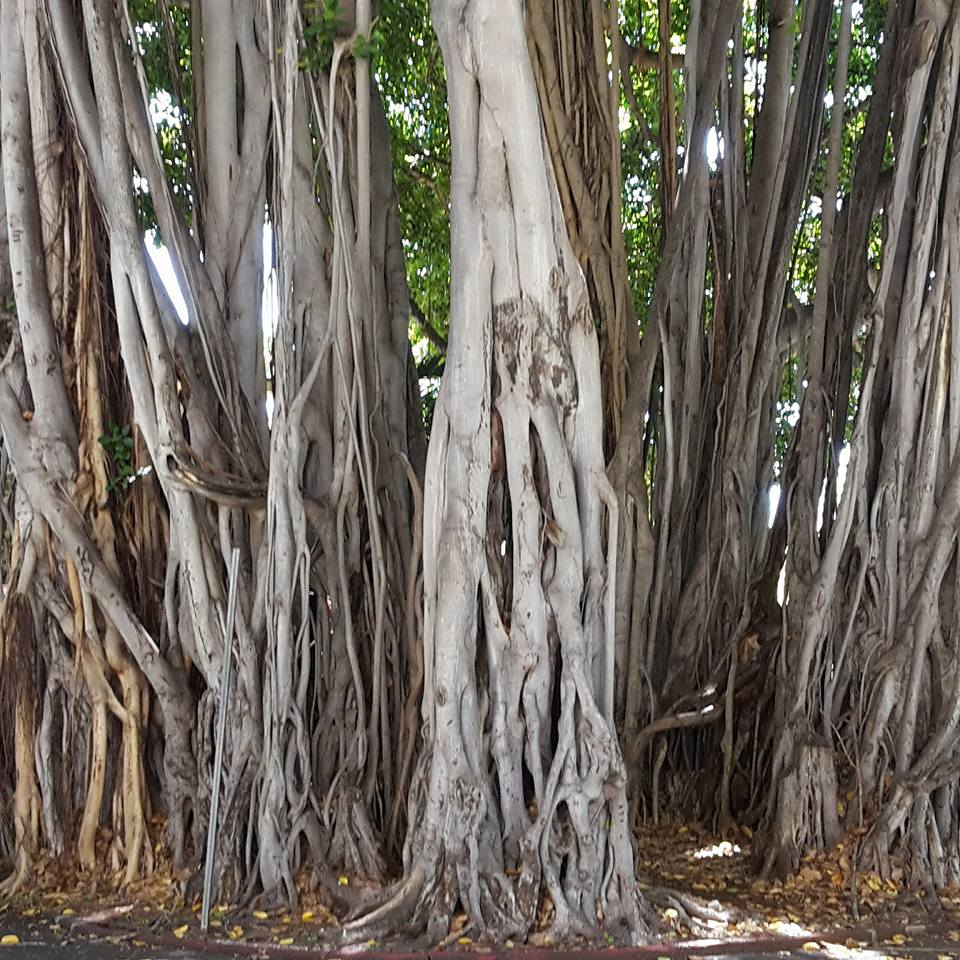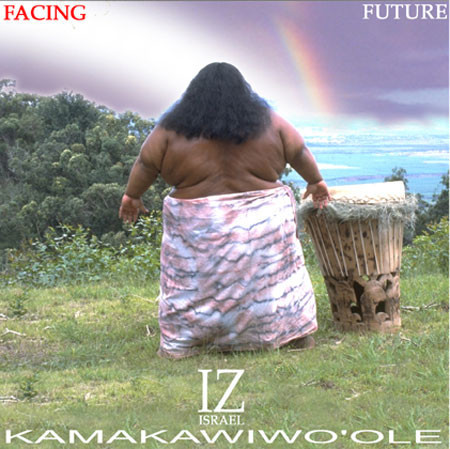
“If just for a day our king and queen
Would visit all these islands and saw everything
How would they feel about the changes of our land
Could you just imagine if they were around
And saw highways on their sacred grounds
How would they feel about this modern city life?
Tears would come from each other’s eyes
As they would stop to realize
That our people are in great, great danger now
How would they feel?
Would their smiles be content, then cry”
These excerpts from Bruddah IZ’s version of Hawai‛i 78 are a commentary to the “development” that Hawaiians are paying for in cultural trauma. The song questions how the Hawaiian kings and last queen would feel if they saw what has become of their Hawai‛i nei. Israel Kamakawiwo‛ole passed away in 1997, but his album Facing Future all of a sudden reached platinum status in the charts more than a decade later than he could witness. Now, the song is being shared online for the solemn mood that underscores what is happening with the desecration of Mauna Kea by the TMT project, as well as the railway on O‛ahu, sacrificing farmland for Ho‛opili, the condominiums in Kaka‛ako, and the houseless Kānaka Maoli who can no longer afford to live on this land. The song sums up the dangers Hawai‛i and its people are facing in modern times.
I recalled the title of this album when I thought of a common binary presented in the stories about the Mauna Kea protectors. Living in the past, fighting progress, need to move into the future. I then remembered how a professor in a cultural anthropology class, the year before Over the Rainbow re-emerged and went platinum in Germany, explained her analysis of the album cover according to the Kanaka Maoli concept of time: IZ’s broad back faces the viewer and his figure looks on into the distance. Even if the album cover was not deliberate in this interpretation, the concept is that of looking into the past, because it is what can be seen as it has already passed, and the approaching future is at your back, but it cannot be perceived in direct view, until it turns into the present in the periphery and the past before you again. You look into the past to guide you into the future.
So on the one hand, the detractors may be right, Hawai‛i must face the future, but on the other hand, this future (counting from 1978 onwards perhaps) is also now the past that is being reclaimed. Bruddah IZ’s misinterpretation of the original song’s “and then bid goodbye, Hawai‛i”, may perhaps even be a more confident note to the lyrics that become “and yet you’ll find Hawai‛i”. By 1978 Kānaka Maoli were indeed moving into the future. They took a stand to reclaim Kaho‛olawe, to reclaim their ‛ōlelo Hawai‛i, to teach and learn hula, songs, and chants. Practices which all take their knowledge from grasping the language that guides the stories being told. Basically, it is also the move to reclaim the strength and power and the life of the culture.
Another false binary being used against aloha ‛āina is that of science vs. culture. It gets debunked by all the protectors who are scientists at the same time as they are protecting their cultural rights as Kānaka Maoli. It is also set straight when explaining that Hawaiian cultural practices and beliefs are science. Indigenous knowledge systems are not set apart from what is “Western” science, as planting taro, constructing fish ponds, and navigating the ocean are guided by understanding how the land, the sea, and the skies above function. This knowledge that is handed down does not necessarily need to be written in formulas and blueprints and maps, it is told in the stories.
What contributes to the understanding of aloha ‛āina is that among the activists are countless Kanaka Maoli professors and scholars from the University of Hawai‛i or other institutions. Many of the speeches and performances at the Aloha ‛Āina Unity March were by professors who use not only their positions in the community, but also their knowledge, for aloha ‛āina. Academia and activism combined are able to set a sturdier foundation for education, especially when detractors would rather depict us as “protesting for the sake of protest”.
The musical activism of IZ’s album and aloha ‛āina songs and spoken word performances may be more persuasive than one piece of text can be. But rather than point out the binary between the oral and the written and argue their cultural in/significance, here, academia and activism weave it together and complementary to each other. In the spirit of Hawaiian mo‛olelo, I also felt the need to bring into my writing the essence that lives in the oral form of story-telling, and only when I played the song again, the verses to this writing were able to flow.
Hawai‛i 78 includes the words of Kamehameha III spoken after the restoration of sovereignty in 1843 (and now the state motto) in its chorus: “Ua mau ke ea o ka ‛āina i ka pono ‛o Hawai‛i”. When the TMT supporters want to appropriate the words of the Hawaiian kings and claim that Queen Lili‛uokalani would without doubt want this form of progress for the people of Hawai‛i, they should listen to the song that tells of the grief for the danger their people are in, if they had ever been able to foresee what was to come with the overthrow and occupation.
All this so-called progress is not worth the loss of the culture and the trauma of the people. The immeasurable value of the ‛āina cannot be replaced by treaties and signatures, if the life of the land is the life of the nation. Looking into the past and the wrongs done unto the people of Hawai‛i will help guide into the future, to be steadfast and reclaim what is Hawaiian.
Just to See the Stars by Bo Napoleon began playing on my internet radio while writing the last lines of this piece. That song was composed shortly after the April 2 arrests to condemn the TMT project for not listening to the people’s voices:
“Is all we own for sale? Cause what we own is who we are
And what we are is more than your conscience can endure”.
Image: Facing Future from The Mountain Apple Company


Leave a comment